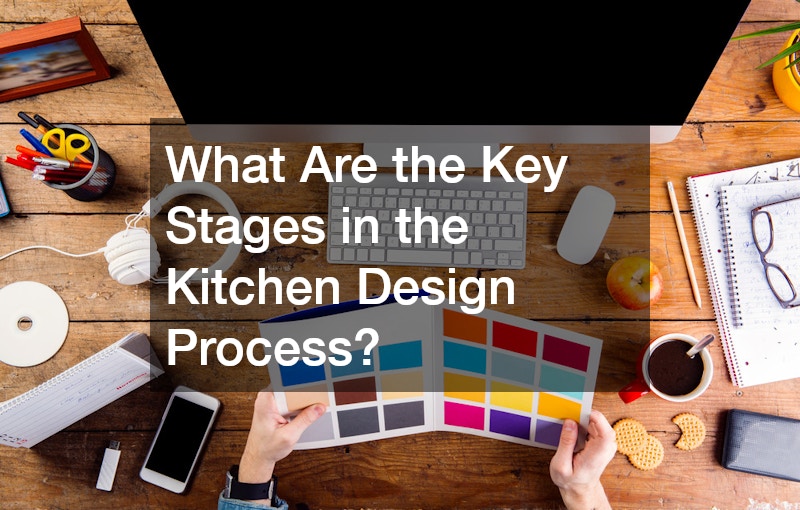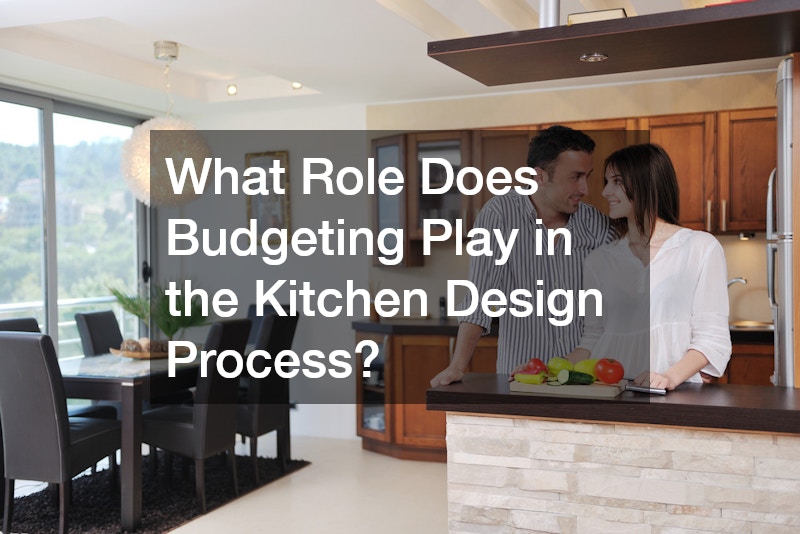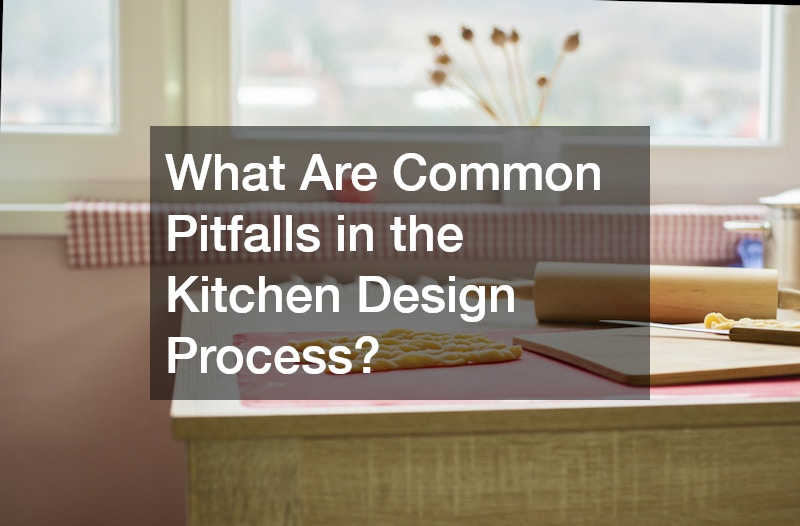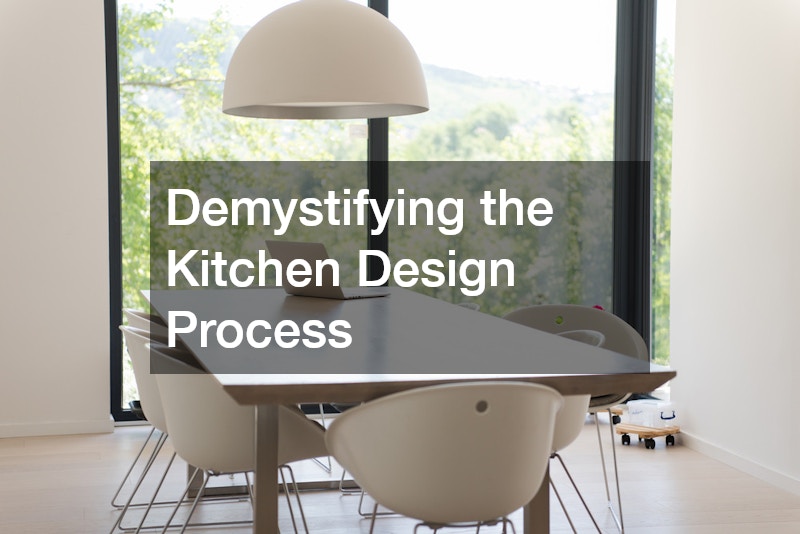Designing a kitchen is one of the most rewarding yet complex undertakings in home improvement. As the central hub of any home, the kitchen is where families gather, meals are prepared, and memories are made. Because it plays such a pivotal role, a thoughtfully designed kitchen can enhance daily life and boost the value of your property.
Yet, the kitchen design process can be overwhelming due to the sheer number of decisions involved. From determining the ideal layout and selecting finishes to hiring contractors and managing the budget, each step requires careful attention. This guide aims to clarify the kitchen design process, helping homeowners make informed, confident decisions at every stage.
What Are the Key Stages in the Kitchen Design Process?

Initial Consultation
Your kitchen transformation begins with an initial consultation. Whether you’re working with an independent designer, a remodeling contractor, or visiting a flooring store or cabinetry showroom, this stage is about communication. Homeowners share their vision, must-haves, lifestyle needs, and inspiration. This phase sets the foundation for the entire project, ensuring the final design meets both functional and aesthetic goals.
Space Planning
During space planning, professionals measure the room’s dimensions and assess existing structural elements like doors, windows, and utility lines. An electrical contractor may be consulted to evaluate wiring needs, especially if you plan to introduce new appliances or upgrade your electrical lighting service. A local plumber may also inspect water lines to confirm compatibility with layout changes, making this stage critical for smooth execution down the line.
Design Development
Once logistics are outlined, the design phase kicks into full gear. This includes detailed layout planning, material selection, and visual renderings. Flooring choices, for instance, often come into focus here. Many homeowners opt for tile vinyl floorings due to their durability, moisture resistance, and variety of patterns. Countertop materials are also finalized at this point, with marble countertop surfaces remaining a top choice for their elegance and timeless appeal. Designers also begin outlining cabinetry and storage solutions, often working with a cabinet service provider to ensure optimal space use and customization.
Finalizing the Layout
The final layout includes detailed specifications for cabinets, flooring, appliances, plumbing fixtures, and lighting. At this point, decisions regarding built-in elements, accessibility, and workflow are finalized. Electrical lighting service providers ensure that all fixtures are appropriately placed for both task and ambient lighting needs. Smart home automations may also be integrated here, allowing for connected lighting, appliance control, and temperature regulation for a truly modern kitchen experience.
Installation and Completion
Installation involves skilled professionals bringing the vision to life. General contractors, electricians, flooring installers, and plumbing services coordinate efforts to ensure the kitchen functions seamlessly. Those who opted for a marble countertop often schedule marble polishing at the end of the installation to enhance the surface’s natural luster. Once all systems are tested and cabinetry is aligned, a final walkthrough ensures every detail meets expectations before the space is declared complete.
How Do I Determine My Kitchen Style?

Understanding Design Preferences
Your kitchen’s style should reflect your personality and how you use the space. Whether you enjoy cooking elaborate meals or need quick convenience, your design should accommodate these habits. Consider colors, textures, and configurations that feel right for your home.
Exploring Different Styles
There’s no shortage of kitchen styles to choose from. Contemporary kitchens favor clean lines and integrated appliances, while farmhouse styles highlight open shelving and natural materials. Transitional styles blend modern elements with classic features. Visiting a flooring store or cabinet service provider can expose you to material options that match specific styles.
Integrating Personal Taste
Personal taste plays a major role in decision-making. A preference for natural textures might lead you toward engineered wood and marble countertop combinations, while a love for industrial aesthetics might inspire metallic accents and bold lighting fixtures. Don’t be afraid to blend influences to achieve a look that feels uniquely yours.
Analyzing Current Trends
Staying updated on kitchen design trends can help inspire your direction. Currently, smart home automations, matte finishes, concealed storage, and statement lighting are gaining popularity. However, it’s essential to strike a balance between following trends and creating a timeless design.
Choosing a Consistent Theme
Consistency is key when blending style elements. The kitchen should feel cohesive with the rest of your home. A common mistake is selecting finishes or styles in isolation, which can lead to disjointed aesthetics. Partnering with a cabinet service or flooring store that offers design consultation can help you create a unified theme.
What Are the Most Important Kitchen Layout Considerations?
Evaluating Workflow
Functionality should lead the way when planning your layout. Think about how you move between food prep, cooking, cleaning, and storage. A good layout minimizes unnecessary movement and improves efficiency.
The Work Triangle Concept
The classic work triangle—connecting the sink, stove, and refrigerator—remains relevant. It ensures that your main tasks are within easy reach while maintaining comfortable spacing. Adjustments may be necessary to accommodate larger appliances or additional work zones.
Space Efficiency
Optimizing space means making every inch count. Custom cabinet solutions can maximize vertical storage, while options like tile vinyl floorings provide a seamless and easy-to-clean surface that doesn’t compromise style.
Accessibility Features
An inclusive kitchen design includes features for all users. Consider lower countertops, wide walkways, and pull-out shelves. Local plumber consultations may be needed to adjust sink height or faucet placement for easier use.
Safety and Compliance
All layouts must comply with building codes and safety guidelines. A licensed electrical contractor will ensure wiring meets standards, particularly if smart home automations are added. Similarly, plumbing services can confirm that water and gas lines are installed securely and efficiently.
How to Choose the Right Materials for Your Kitchen
Countertop Options
Your countertop serves as both a design statement and a functional surface. A marble countertop offers elegance and heat resistance, but it requires regular maintenance, including marble polishing. Alternatives include quartz for durability and butcher block for warmth.
Cabinetry Materials
Cabinetry defines the visual and practical essence of the kitchen. Solid wood is traditional and long-lasting, while laminates and MDF provide affordable, versatile options. Partnering with a reputable cabinet service ensures proper fit and finish.
Flooring Considerations
Flooring must be durable, slip-resistant, and aesthetically aligned with your kitchen’s style. Tile vinyl floorings are a popular choice thanks to their water resistance and wide range of designs. Visiting a flooring store allows you to compare samples and see how they complement your other selections.
Backsplash Choices
Backsplashes offer a chance to play with texture and color. From ceramic tile to glass, stone, or even marble to match your countertops, the right backsplash ties your kitchen together while protecting walls from spills and stains.
Lighting Selections
Good lighting blends task, ambient, and accent illumination. An electrical lighting service can help layer different light sources effectively. Consider under-cabinet lighting for work zones and pendant lights to define dining areas or islands.
What Role Does Budgeting Play in the Kitchen Design Process?

Establishing a Budget
Creating a realistic budget is critical. Begin by listing priorities, such as appliances, flooring, or cabinetry. Determine how much you can spend and where flexibility exists.
Allocating Resources
Budget allocation should reflect your priorities. High-traffic features like countertops and floors may warrant more investment. For example, investing in a durable marble countertop or high-quality tile vinyl floorings can offer long-term returns.
Cost-Saving Tips
To manage costs, consider phased upgrades, using existing layouts, or combining luxury finishes with more affordable options. A cabinet service provider might offer stock or semi-custom options that cost less than full custom cabinetry.
Dealing with Unexpected Costs
Always build in a contingency—typically 10 to 15 percent—for surprises. Plumbing services might uncover outdated piping, or an electrical contractor may identify code violations that must be corrected.
Financing Options
Explore financing through home improvement loans, credit programs, or store financing at places like a flooring store or appliance center. Many contractors also offer payment plans for larger remodels.
How to Select the Right Appliances for Your Kitchen
Energy-Efficient Models
Choose appliances that reduce energy consumption and save on utility bills. Look for ENERGY STAR® certification and consider how new technologies contribute to efficiency.
Size and Fit Considerations
Measure appliance dimensions and door clearance carefully. Oversized appliances can crowd the kitchen and disrupt workflow, especially in smaller spaces.
Matching with Design Aesthetic
Appliances should complement your overall design. Stainless steel works well in contemporary settings, while matte or panel-ready options blend into cabinetry for a seamless look.
Essential vs. Luxury Appliances
Focus on what you truly need. While dual ovens and wine coolers may appeal to some, others may prefer investing in a smart refrigerator or a high-end range.
Future-Proofing Choices
Think ahead by choosing appliances compatible with smart home automations. This can include voice-activated ovens, refrigerators that track inventory, or dishwashers with Wi-Fi diagnostics.
What to Consider When Lighting a Kitchen
Types of Kitchen Lighting
A well-lit kitchen uses three types of lighting: ambient for overall illumination, task for specific work areas, and accent for decorative impact. All three contribute to a functional and beautiful space.
Functional Lighting Needs
Task lighting is essential for chopping, cooking, and cleaning. Options include under-cabinet lights, pendant lights over islands, and adjustable track lighting.
Ambient Lighting Design
Ambient lighting sets the overall mood. Recessed ceiling fixtures or flush-mount ceiling lights evenly distribute light throughout the space. A consultation with an electrical lighting service can help tailor the system to your needs.
Accent Lighting Techniques
Accent lighting highlights design features like open shelves or decorative tile. It adds depth and dimension to your kitchen and enhances visual interest.
Balancing Natural and Artificial Light
Natural light is invaluable but not always abundant. Blend windows or skylights with artificial solutions to maintain brightness and visibility at all times of day.
How Can Technology Enhance the Kitchen Design?
Smart Appliances
Smart ovens, fridges, and dishwashers allow for remote operation and diagnostics. These appliances can alert you to maintenance needs, track energy usage, or even suggest recipes based on available ingredients.
Integrated Home Systems
From lighting to HVAC, integrated home systems allow you to control kitchen environments from your smartphone. Smart home automations can manage lighting levels, play music, or adjust blinds.
Innovative Cooking Gadgets
Smart faucets, induction cooktops, and precision cookers bring futuristic efficiency to modern kitchens. These tools streamline tasks and reduce waste.
Automation and Control
Technology makes your kitchen more convenient. Motion sensors, voice controls, and app interfaces give you hands-free operation and real-time feedback.
Maintaining a Tech-Friendly Environment
Your kitchen must accommodate tech needs with proper wiring, outlets, and connectivity. A licensed electrical contractor ensures safe and effective integration of these features.
What Should I Know About Hiring a Kitchen Designer?
Evaluating Credentials
Look for a designer with formal training, certifications, and experience in kitchen remodels. A portfolio of past work can offer insight into their style and capabilities.
Collaboration and Communication
Your designer should be a good listener and a clear communicator. Regular updates and discussions are essential to ensuring that your vision is understood and executed properly.
Understanding Fee Structures
Designers may charge flat fees, hourly rates, or a percentage of the total project cost. Be clear on costs upfront to avoid surprises.
Setting Project Expectations
Discuss timeline, milestones, and deliverables early on. Knowing what to expect at each stage helps keep the project on track.
Reviewing Past Work
Ask for references or reviews from past clients. A designer’s history with cabinet service providers, plumbing services, or flooring stores can indicate the quality of their professional relationships.
What Are Common Pitfalls in the Kitchen Design Process?

Skipping Initial Planning
Jumping into material selection or construction without a clear plan often leads to costly revisions. Take time to solidify your vision and layout first.
Overlooking Storage Needs
Insufficient storage is a common regret. Make sure you plan for pantry space, drawer organizers, and upper cabinets that maximize vertical space.
Ignoring Existing Architecture
Designs that clash with your home’s architectural style may feel out of place. Consider how your new kitchen integrates with surrounding rooms.
Underestimating Lighting Importance
Poor lighting can ruin an otherwise great kitchen. Consult professionals for proper electrical lighting service and fixture placement.
Failing to Future-Proof
Design with the future in mind. Consider smart home automations, durable materials, and adaptable layouts that will meet your needs for years to come.
Closing Thoughts
Designing a kitchen involves far more than choosing colors and finishes—it’s about crafting a space that meets your functional needs, reflects your personal style, and adapts to future demands. By following a structured process and collaborating with experienced professionals, you can transform your kitchen into a space that brings both beauty and efficiency to your home.
